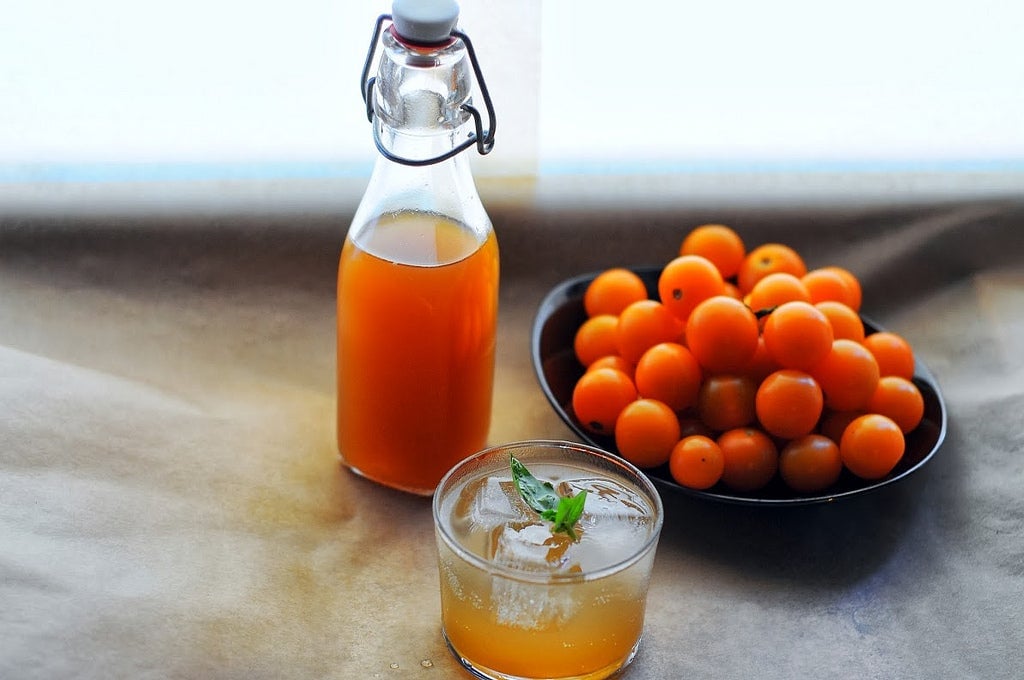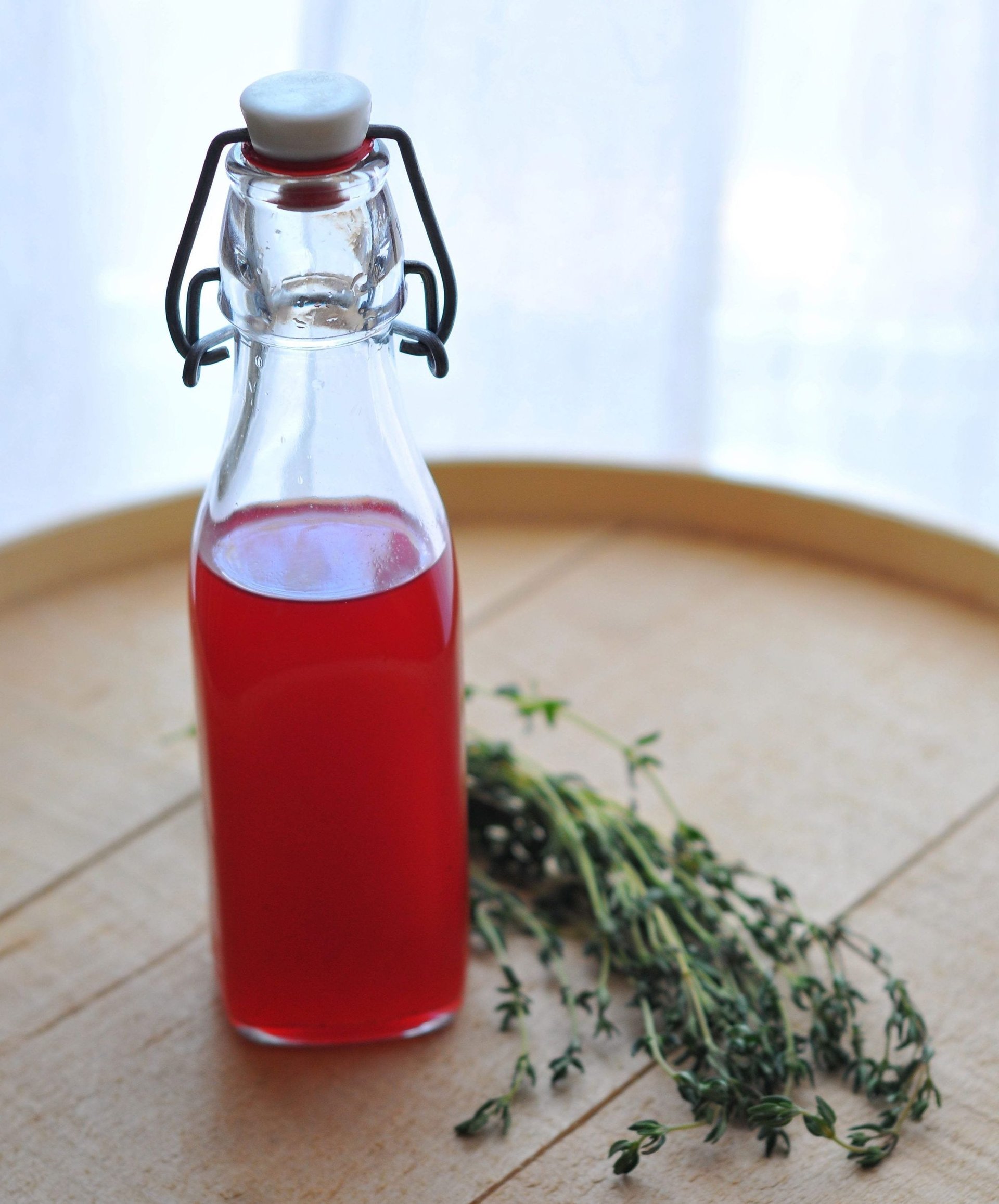Drinking vinegars, from shrubs to sekanjab, are the original energy drink
In the pantheon of flavor, sour is probably the most perpetually underutilized building block to deliciousness, at least in Western kitchens. It’s often what makes the difference been an OK meal and a great one: Good cooks speak of “lightening up” a rich savory dish with a squeeze of lemon or spritz of vinegar, and tartness is often the missing element in overly sweet desserts.


In the pantheon of flavor, sour is probably the most perpetually underutilized building block to deliciousness, at least in Western kitchens. It’s often what makes the difference been an OK meal and a great one: Good cooks speak of “lightening up” a rich savory dish with a squeeze of lemon or spritz of vinegar, and tartness is often the missing element in overly sweet desserts.
That same burst of acidic brightness is as crucial in the cup as it is on the plate. Cocktails missing an acid component read as heavy and flat—which is why bars go through so much citrus.
Before lemons and limes were widely and affordably available though, much of the world relied on vinegar for that fresh rush of flavor, mixing it with fruit, water, spices, and herbs to make thirst quenchers and fancy drinks alike.
Tart refreshment
In The Long Winter, the sixth novel in Laura Ingalls Wilder’s Little House series based on her life as a homesteader in the American West, she writes of a noontime treat enjoyed by workers during a hot day spent haying. “Ma had sent them ginger-water. She has sweetened the cool well-water with sugar, flavored it with vinegar, and put in plenty of ginger to warm their stomachs so they could drink till they were not thirsty.”
Also called haymaker’s punch, or switchel, water mixed with vinegar and honey, sugar, molasses, or maple syrup was a common way to stay hydrated long before sports drinks were invented. The sweeteners offer ready fuel to keep moving, the water hydrates, and the acid from the vinegar stimulates saliva production, which prolongs the sensation of refreshment. Adding a pinch of salt to the mix provides electrolytes that get sweated out under a hot sun.
Dana St. Pierre, one of the founders of Fire Cider, a tonic made by steeping citrus, ginger, garlic, onions, horseradish, and hot peppers in apple cider vinegar, told me in an interview last year that athletes who follow a paleo diet were buying his infused vinegar by the gallon to make their own rehydrating drink. And indeed, switchel is much like the ancient Roman drink posca, which my colleague Gwynn Guilford wrote, “holds a special place in beverage history thanks to its role as the Gatorade of the Roman army.”
“Vinegar is incredibly good at quenching your thirst when it’s hot out,” writes Michael Dietsch in his book Shrubs, An Old-Fashioned Drink for Modern Times. These tart drinks aren’t just tonics for thirsty workers or Cross Fit obsessives. Like lemonade, they’re a way to relax and refresh in the heat.
In Persian cuisine, sekanjabin is a syrup made from cooking sugar, water, and vinegar together, often with herbs like mint steeped in the mixture. Sekanjabin can be used as the base of a cooling drink when combined with ice, water, more mint, and cucumber, or as a dipping sauce.
“My mother would place a bowl of sekanjabin in the middle of a large round tray surrounded by several heads of fresh and crisp lettuce,” writes Azita Mehran, author of the Iranian food blog, Tumeric & Saffron. “In the middle of the table or on the picnic blanket under the shade of a tree, where we would take a piece of lettuce and dip it into the bowl.”
Sophisticated sodas and cocktail magic
Vinegar drinks aren’t just great for cooling off and rehydrating, they’re also delicious in their own right, with a distinctive sweet-and-sour tang that elevates the other flavors in play. And they form the base for interesting beverages—with or without alcohol—that whet the appetite and pair well with food.
“Research shows that sour-tasting beverages—such as vinegar and lemonade—are better at stimulating salivation than are other drinks,” writes Dietsch, noting that saliva production signals to the stomach that food is on the way. “Shrubs are a perfect cocktail to prepare you for a night of fine dining.”
Shrubs are made by cooking vinegar, fruit and sugar together—much like a sekanjabin but not reduced down as much—or by letting those ingredients macerate in the refrigerator for several days and then straining them. Mixed with seltzer they’re a sweet-tart soda. Add your favorite spirit, sparkling wine, or mellow dry sherry and you have an instant cocktail.
In the 19th century, shrubs were most often made with raspberries, Dietsch writes, but any fruit, and many vegetables work well, too. My favorite recipes in Shrubs are tomato-based, and they make for an excellent twist on a classic Bloody Mary, or an unconventional sweet-and-sour soda.

Similarly, Andy Ricker, chef-owner of the Oregon Thai restaurant chain Pok Pok, picked up a sweet-and-sour soda in an Asian market and recognized its potential, not only as a foil for his complex and spicy food, but as a cocktail base. Som, his line of bottled drinking vinegars, counts the food writer Ruth Reichl as a fan.
If you can’t get your hands on a bottle of Som, Reichl advises making your own drinking vinegar: “Just mix a tablespoon or two with a bit of sparkling water,” she writes. “Or if so inclined, add a jigger of vodka.”
A spoonful of vinegar for wellness
Vinegar has long been associated with health for its antiseptic qualities when mixed with contaminated water, as was common in Rome, as well as on long ocean voyages.
An oxymel is a syrup made from vinegar, honey, and herbs that was traditionally used to preserve and improve the flavor of medicinal herbs. They can also be made into refreshing beverages—sekanjabin is technically a mint oxymel.
While some athletes use Fire Cider to make their homemade sports drinks, the more common use for the spicy tonic is as an immunity booster to fight off winter colds. The theory is that the capsicum in the chiles and the natural antimicrobial properties of alliums like onions and garlic, plus vitamin C in the citrus work together to bolster the immune system. There’s no solid proof that a bracing dose of firey, pungent vinegar in the morning actually wards off viruses, but the experience is so memorable it definitely suggests that something is happening.
Drinking vinegars and apple cider vinegar shots are often touted for all kinds of health benefits ranging from a stronger immune system to—of course—weight loss. There is some promising data that points to vinegar’s ability to stabilize blood sugar levels, but in general the science on vinegar and health is thus far inconclusive, but there are plenty of drinking vinegars, making a wide variety of health claims, on the market to sample.
Vinegar drinks fall into a category that the fermentation maven Sandor Ellix Katz calls sour tonic beverages. “They are tasty beverages, somewhat acidic, somewhat sweet, and in some cases lightly alcoholic, teeming with live lactic acid bacteria (among others) and generally regarded as healthful and tonic,” he writes in The Art of Fermentation. Most of the vinegar you buy at the store does not actually have live cultures, as it has been pasteurized (Bragg’s apple cider vinegar is an exception), but the vinegar used in traditional switchels would have been raw.

One can’t discuss vinegar-based drinks without mentioning that other wellness darling: kombucha. “Some have even described kombucha as immature vinegar,” Katz writes. He outlines a whole host of traditional fermented drinks, including kvass, a Russian beverage made from bread soaked in water; kefir; mabí, a tree bark and sugar ferment found around the Caribbean; and tepache and aluá, lightly fermented fruit or corn consumed in Mexico and Colombia.
Neither fermentation in general, nor vinegar in specific, are magic health elixirs, but the fact that we, as humans, have been making tangy sour drinks in so many ways for so long speaks to their broad appeal.
Whether made from bread, bark, or wine that has turned to vinegar, many they are undeniably delicious, and that alone is enough reason to give them a try.